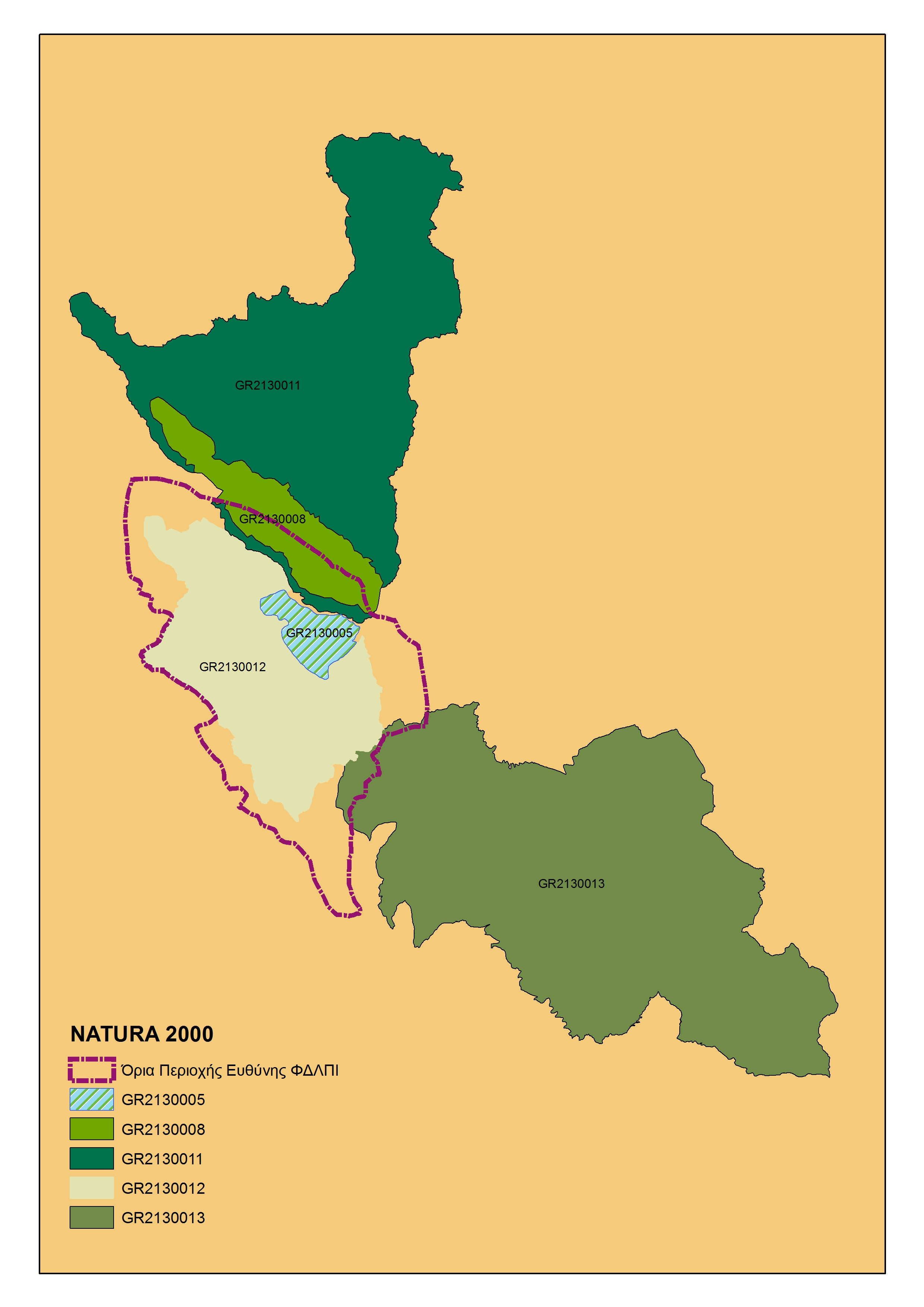THE NATURA 2000 NETWORK - The Habitats’ Directive 92/43/EEC
The International Convention on Biodiversity (United Nations Conference on Environment and Development - UNCED, Rio de Janeiro, 1992) raised for the first time, as a political and financial issue, the problem of the increasing reduction of species and the significant decline of biodiversity, due to human activities. The protection of the diversity in all kinds of livings on earth was considered that it should become an issue covered by international law, because biodiversity’s degradation has scientific, political and economic impacts on the entire planet.
The continues destruction of natural habitats, the increasing intensity of urbanization and infrastructures, the over-exploitation of natural resources, any kind of pollution and the introduction of alien species to ecosystems, act as a catalyst to the reduction of biodiversity.
Nowadays, the loss of biodiversity is recognised as one of the biggest problems. The rate of biodiversity loss is immense and it threatens the survival of our own species due to the interruption of vital ecological processes.
In order to safeguard and protect biodiversity, and to confront the extinction of animal and plant species, the European Union created, among other things, a network of protected areas, the Natura 2000 network, and made the conservation of biodiversity one of its key-targets.

Source: European Environment Agency (http://www.eea.europa.eu)
The>Habitats’ Directive 92/43/EEC oon the conservation of natural habitats and of wild fauna and flora" was established by the Council of European Communities in order to protect the European biological diversity, through the conservation of natural habitats and wild fauna and flora.
The measures that are taken accordingly to this Directive, intend to maintain or restore in “favourable conservation status” the natural habitats and species of the wild fauna and flora.
The habitat types And species, which are protected by the Directive 92/43/ EEC, are indicated respectively in Appendix I and Appendix II of the Habitats’ Directive.
Each Member State, based on the criteria which are defined in Appendix III (Stage I) and in relevant scientific information, proposes a list of areas, indicating which natural habitat types from Appendix I and which species from Appendix II can be found in these areas.
A. Site assessment criteria for a given natural habitat type in Annex I:
a) Degree of representativity of the natural habitat type on the site.
b) Area of the site covered by the natural habitat type in relation to the total area covered by that natural habitat type within national territory.
c) Degree of conservation of the structure and functions of the natural habitat type concerned and restoration possibilities.
d) Global assessment of the value of the site for conservation of the natural habitat type concerned.
B. Site assessment criteria for a given species in Annex II:
a) Size and density of the population of the species present on the site in relation to the populations present within national territory.
b) Degree of conservation of the features of the habitat which are important for the species concerned and restoration possibilities.
c) Degree of isolation of the population present on the site in relation to the natural range of the species.
d) Global assessment of the value of the site for conservation of the species concerned.
The Natura 2000 Network is a European Ecological Network of areas, which host important habitat types and species at a European level and its creation is completed in three stages:
Stage I: Compilation of a scientific list of habitats and species
Stage II: Composition of a proposed National list of sites (pSCI/pSPA)
Stage III: Declaration of Special Areas of Conservation – SAC and Special Protection Areas - SPA
The Natura 2000 Network consists of two types of areas:
• Special Protection Areas - SPA (Directive 79/409/EK)
• Sites of Community Importance – SAC (Directive 92/43/EEC)
After the list finalization of pSCI, Member States are obliged to designate such areas as Special Areas of Conservation - SAC within six years and to define the priorities for the conservation of the habitat types and species in a Favourable Conservation status. In Greece, this last stage has been completed with the National Law 3937/11 (Official Gazette 60/A/31-3-2011) "Preservation of Biodiversity and other provisions".
The NATURA 2000 Network now includes 419 sites in Greece of which 5 are included in the wider the area of jurisdiction of the Management Body of Pamvotis Lake:
• GR2130005 (SAC-SPA): LIMNI IOANNINON (as a whole)
• GR2130012 (SPA): EVRITERI PERIOCHI POLIS IOANNINON (as a whole)
• GR2130008 (SAC): OROS MITSIKELI (part of it),
• GR2130011 (SPA): KENTRIKO ZAGORI KAI ANATOLIKO TMIMA OROUS MITSIKELI (small part of it),
• GR2130013 (SPA): EYRITERI PERIOCHI ATHAMANIKON OREON (very small part of it).

Read More...

















